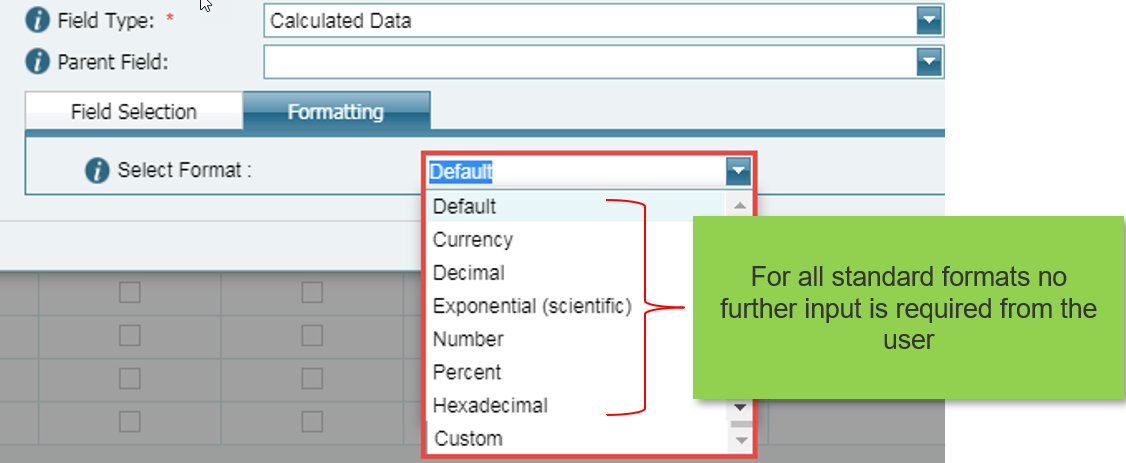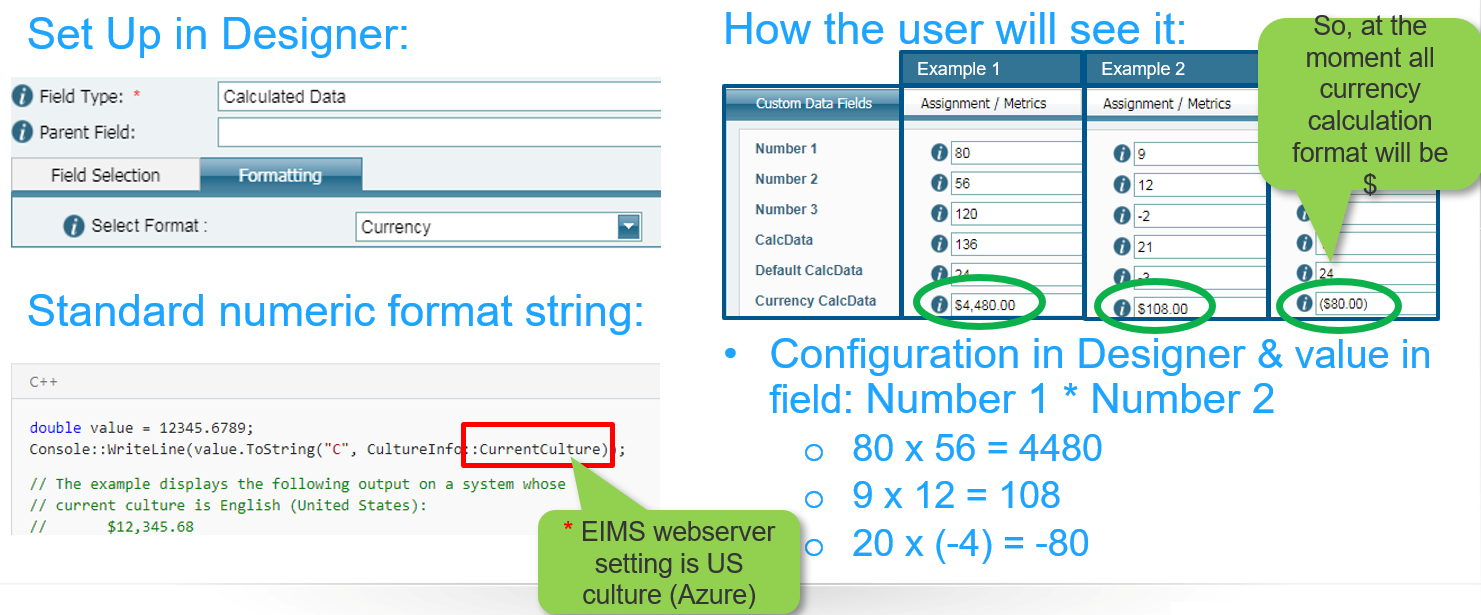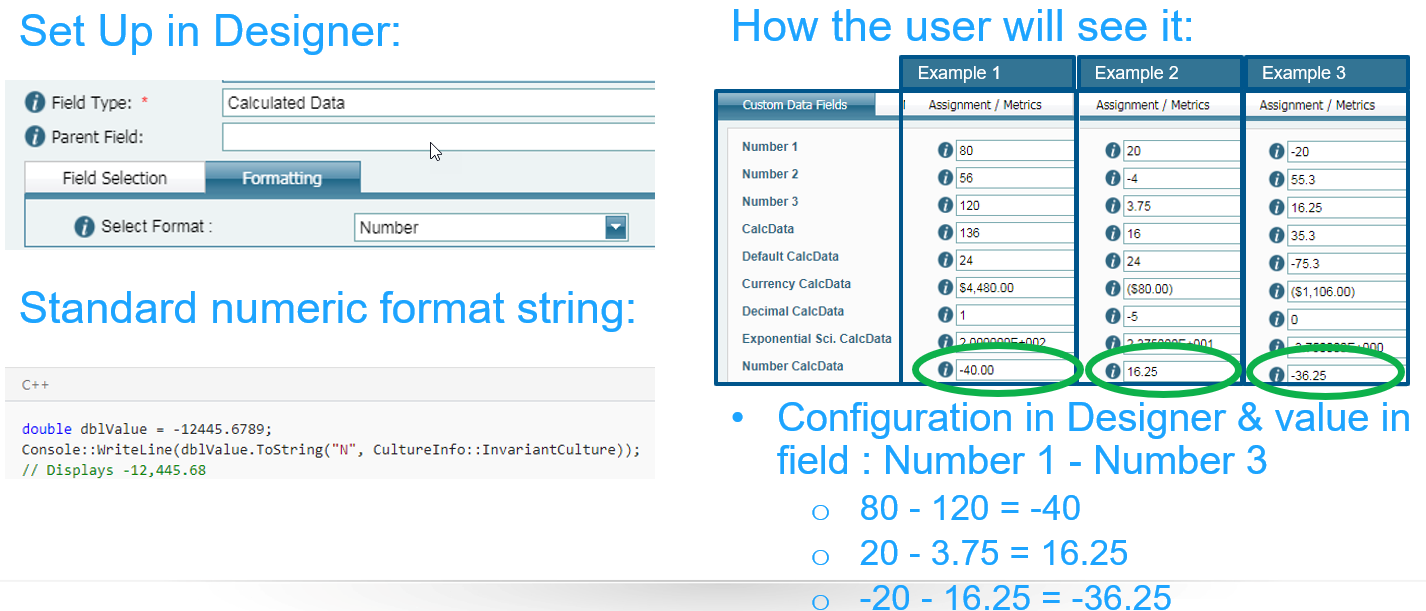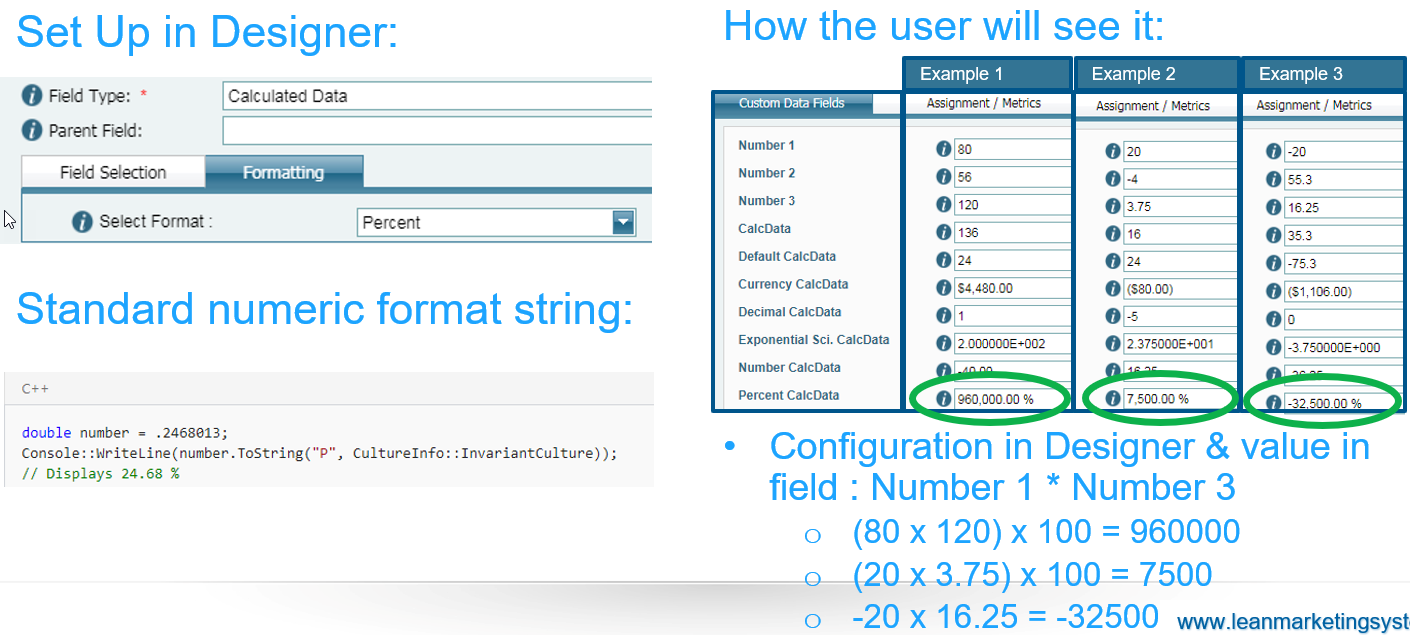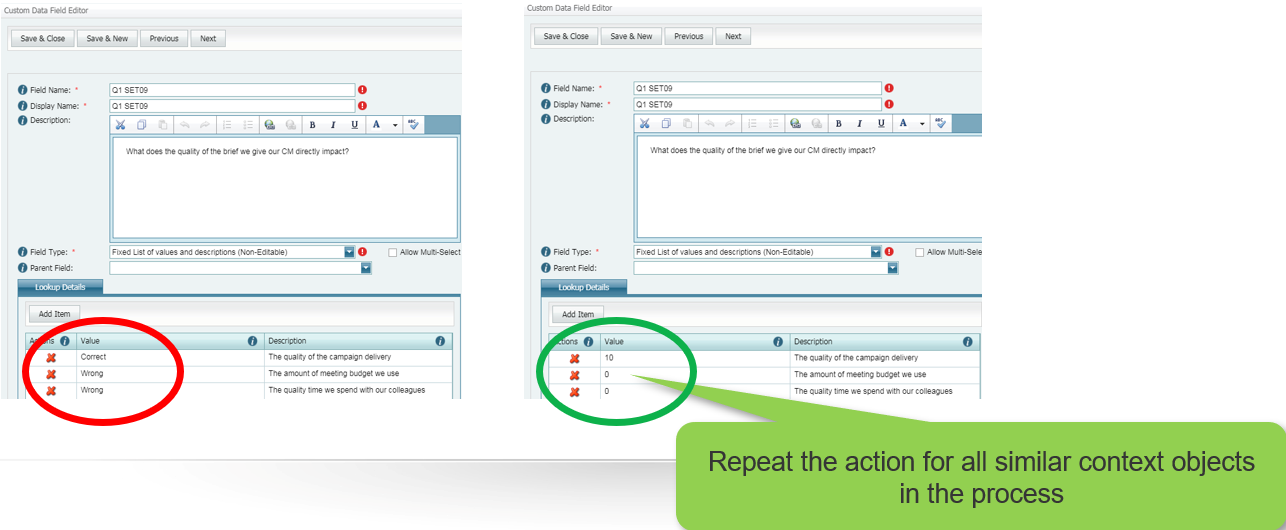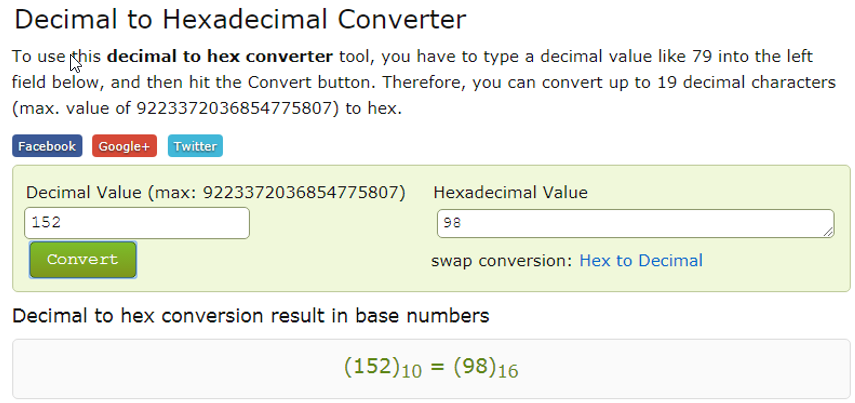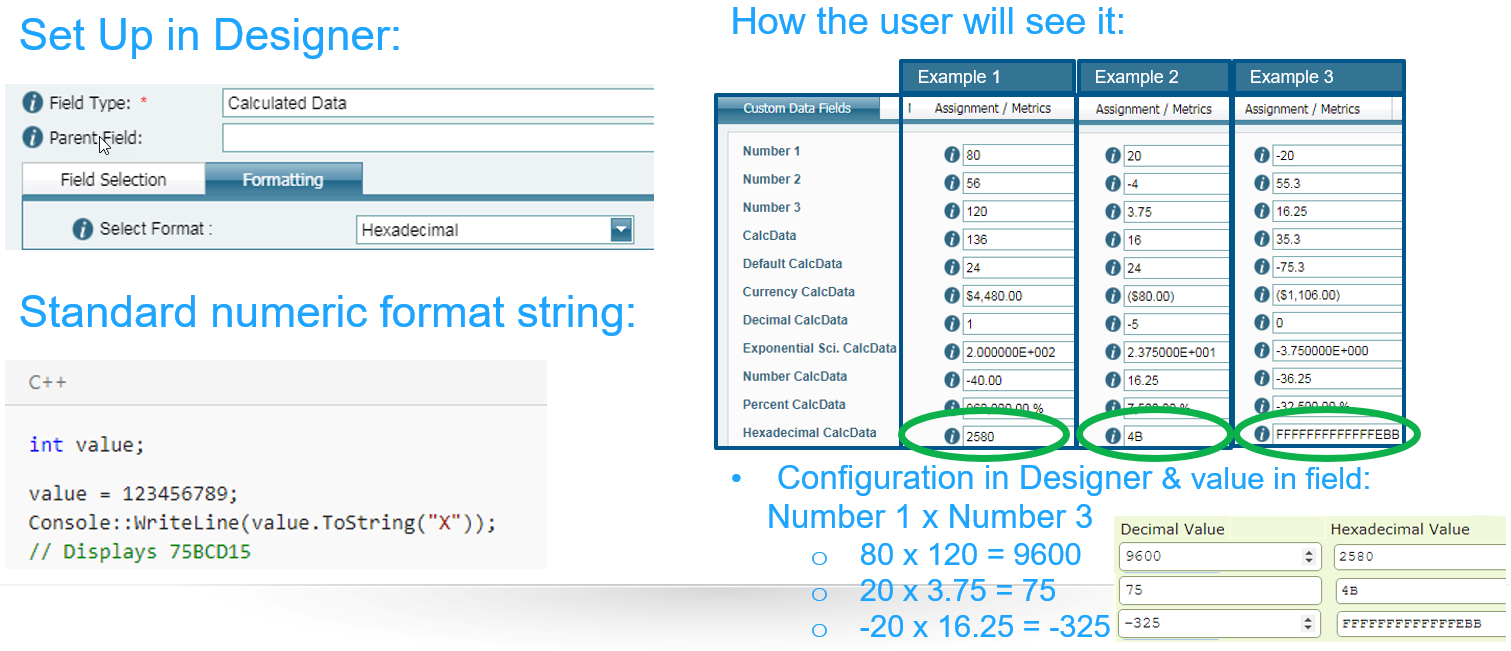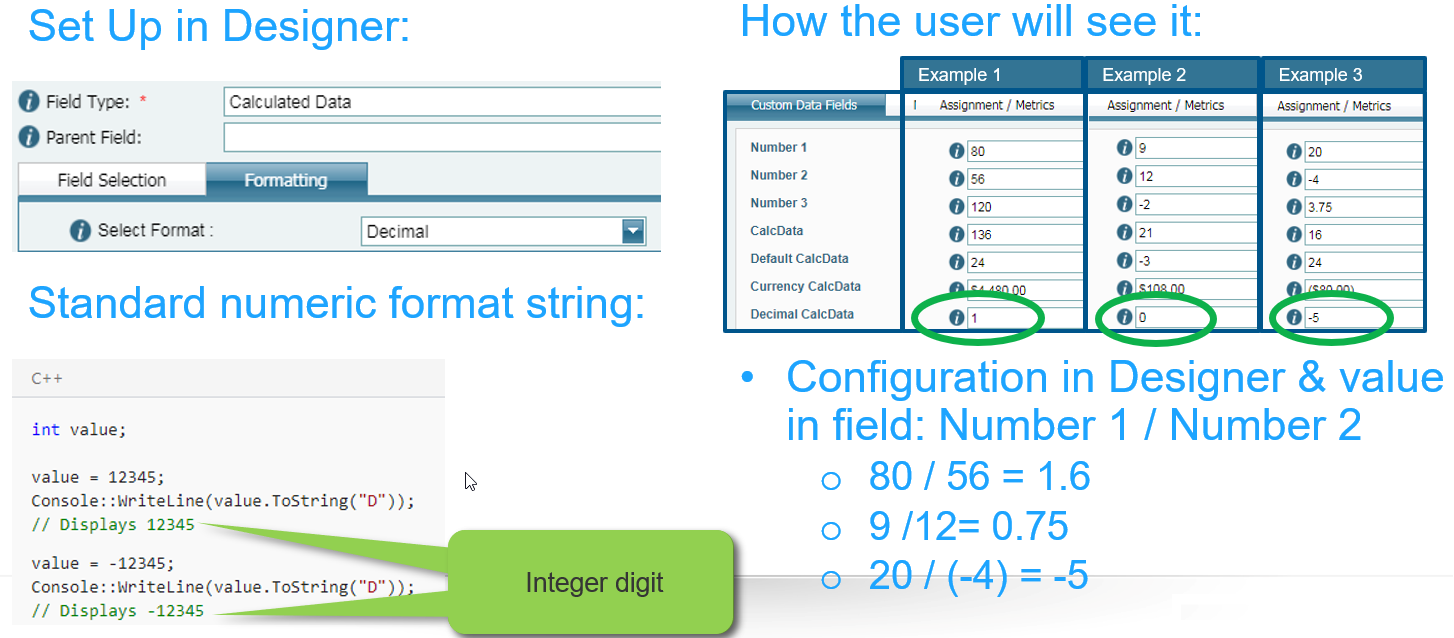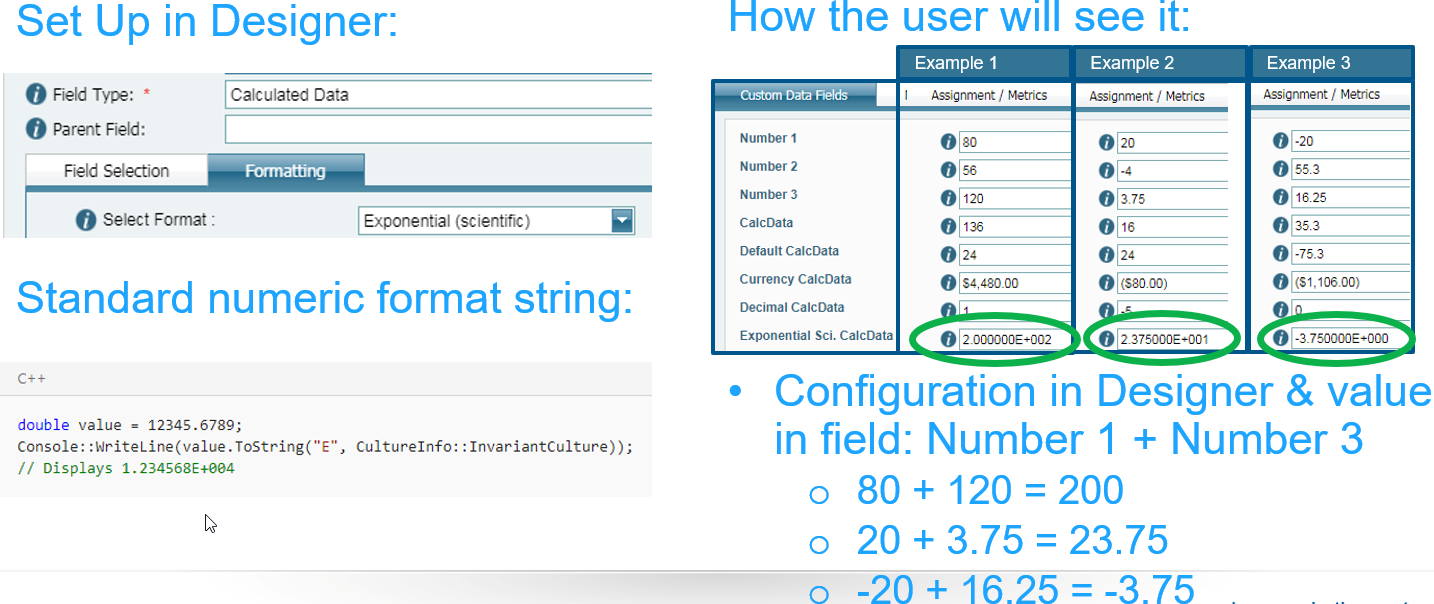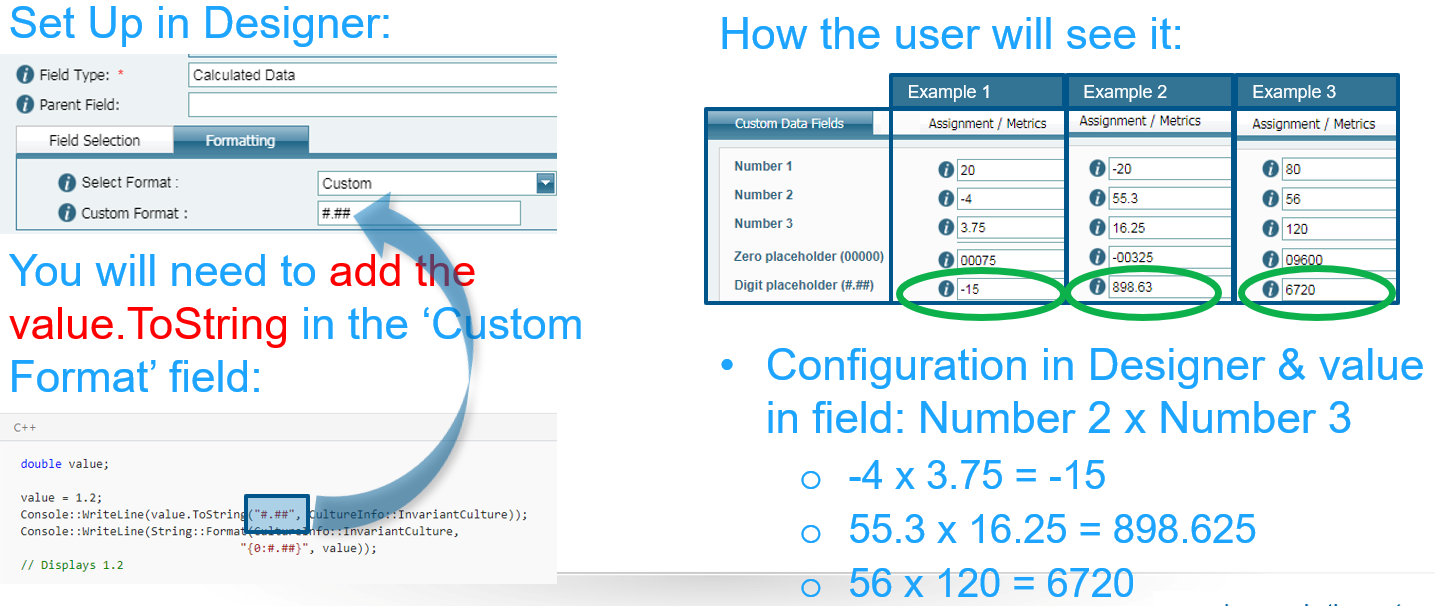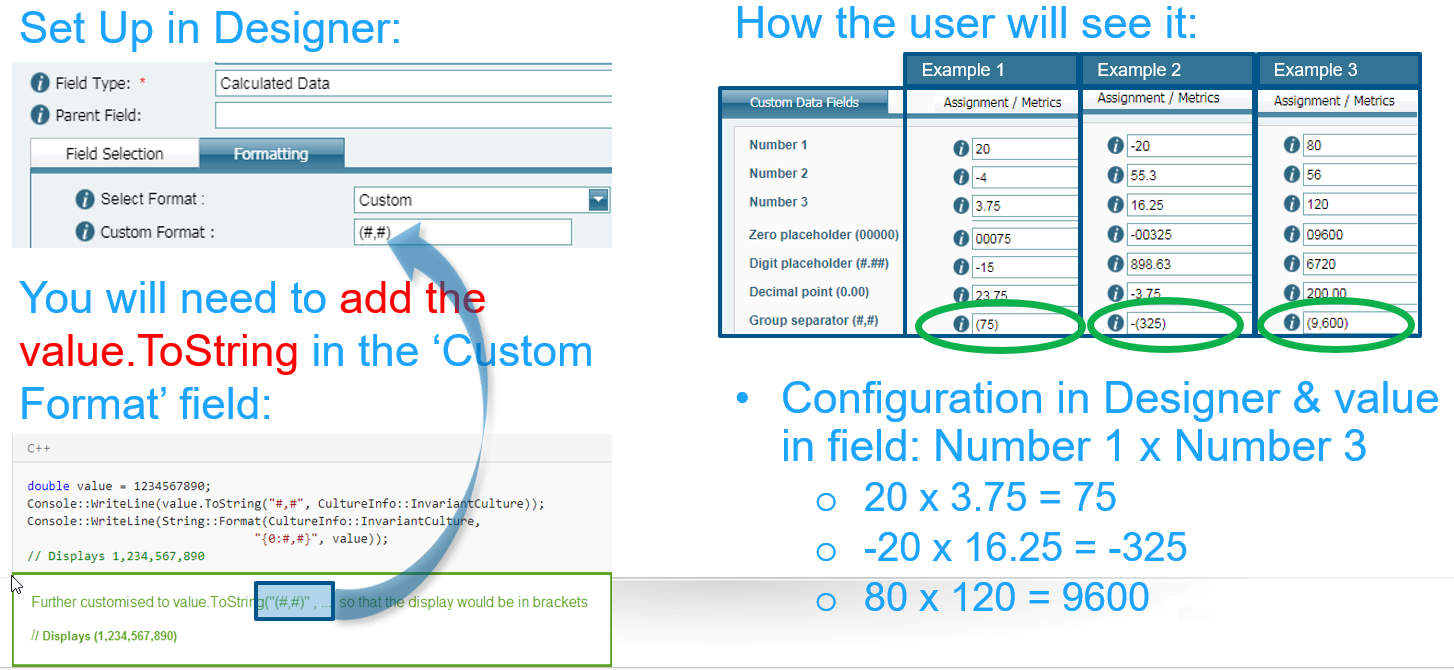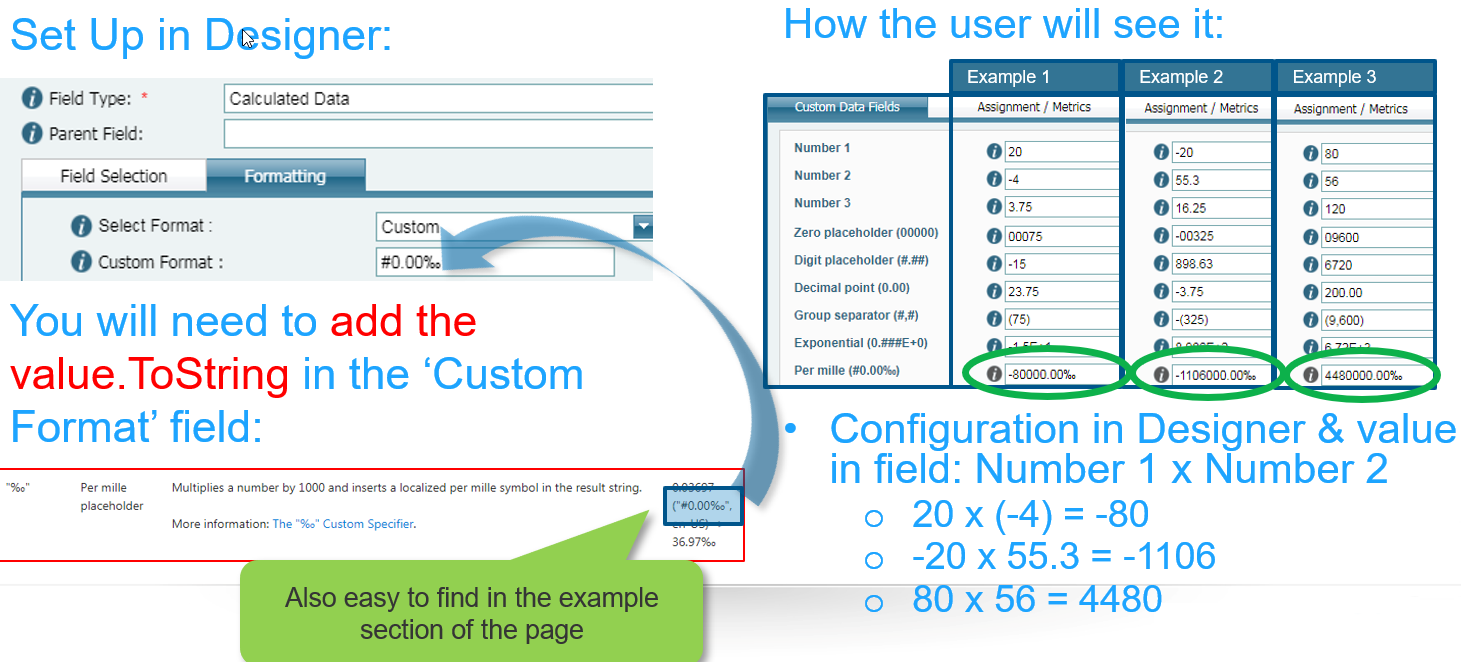What you need to know about Calculated data
Field type "Calculated Data" accepts formatting information using standard formatting (Standard Numeric Format Strings):
https://msdn.microsoft.com/en-us/library/427bttx3.aspx
Data will be displayed in all forms according to the entered formatting information
- Especially %
If no formatting information is present, the default (present) format is used
Note: Formatting applies to the display to users, not the underlying data in the field. So for reporting purposes, the value in the cell will be unchanged. Thus reporting is unaffected by this functionality
How to use Calculated Data Standard Formats
- If you choose to apply a format to your calculated data value, these are the selectable options:
